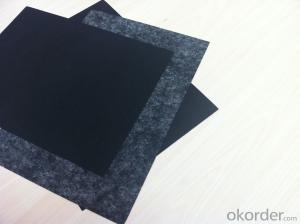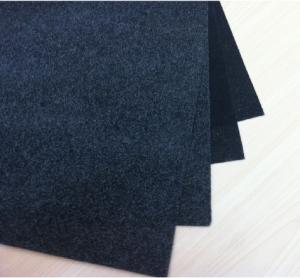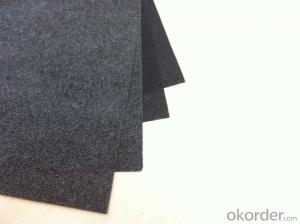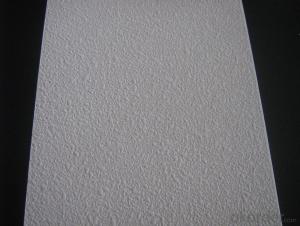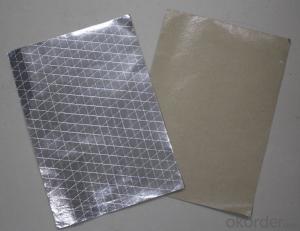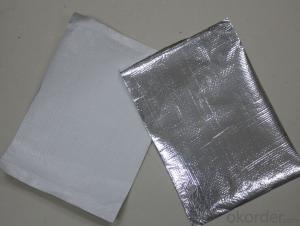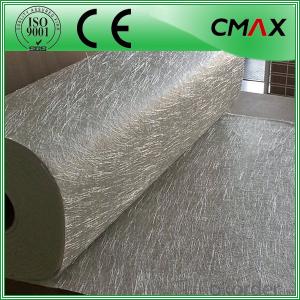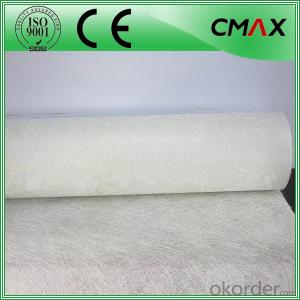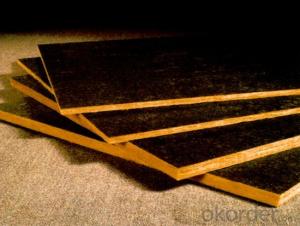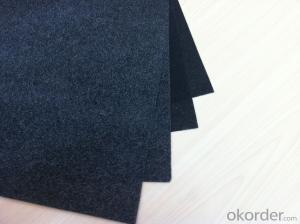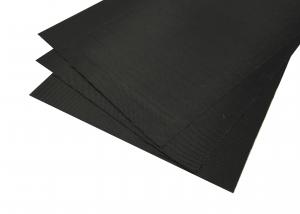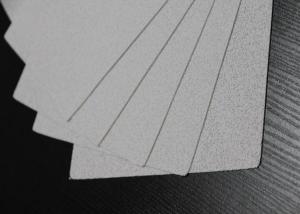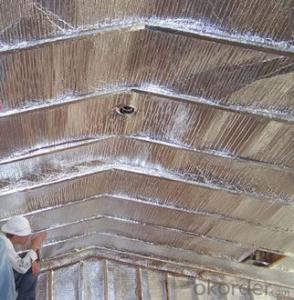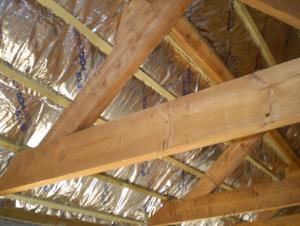Fiberglass Facing Black Fiberglass Tissue for Glasswool-65EP
- Loading Port:
- Shanghai
- Payment Terms:
- TT OR LC
- Min Order Qty:
- 500 m²
- Supply Capability:
- 100000 m²/month
OKorder Service Pledge
OKorder Financial Service
You Might Also Like
Specification
Introduction of Fiberglass Tissue
Fiberglass Tissue is a kind of facing, which is made of by the white fiberglass tissue, and special production process.
Application of Fiberglass Tissue
Our black tissue are mainly used as facing for glass wool insulation, rockwool, mineral wool etc. Also fiberglass tissue facing is used under roof decking, under attic rafters, over existing attic thermal insulation, in floors, walls and crawl spaces, and in industrial and commercial buildings to block radiant heat coming into house through the roof during the summer and retain indoor heat generated during in winter
Advantage of Fiberglass Tissue
Light weight
• High manufacturing accuracy
• High strength
• Small inertia resistance
• Strong heat dissipation ability
• Good visual effect
• High reflective insulation
• Heat resistant, water proof, stable at high temperature;
• Environmentally friendly, no smell and not-toxic;
• Smooth and clear surface;
Packing of Fiberglass Tissue
1. Waterproof paper then PVC shrinking Film
2. Water-Proof film only
3. Woven cloth
4. Kraft paper or Water Proof Film then Metal/wooden pallet
5. (Also as your request. )
Pictures of Fiberglass Tissue
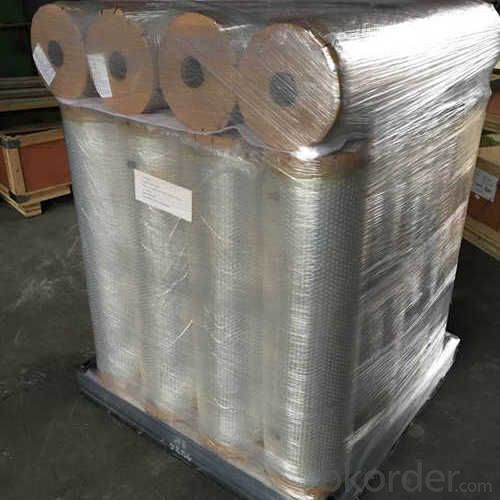
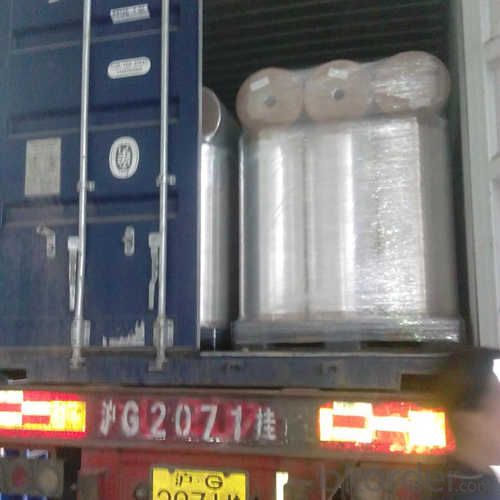
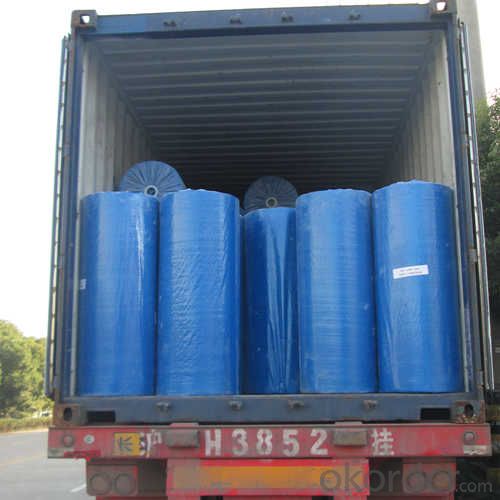
Specification of Fiberglass Tissue
Specification | ||
ITEM | UNIT | VALUE |
Type | C | |
Weight | g/m2 | 65±5 |
Thickness | mm | 0.40 |
Tensile Strength MD | n/125px | ≥130 |
Tensile Strength XD | n/125px | ≥90 |
Fiber Diameter | µ | 9 |
Fire Resistant Property | B1 | |
FAQ
We have organized several common questions for our clients,may help you sincerely:
1. What is the storage condition?
The Aluminum Foil Facing should be stored at room temperature and kept from wet and heat source.
2. How to guarantee the quality of the products?
We have established the international advanced quality management system,every link from raw material to final product we have strict quality test;We resolutely put an end to unqualified products flowing into the market. At the same time, we will provide necessary follow-up service assurance.
3. How long can we receive the product after purchase?
In the purchase of product within four working days, we will arrange the factory delivery as soon as possible. The specific time of receiving is related to the state and position of customers. Commonly 7 to 10 working days can be served.
- Q: Is it possible to utilize recycled black fiberglass tissue for a future project?
- <p>Yes, you can use recycled black fiberglass tissue in your next project, provided it meets the quality and safety standards required for your specific application. Recycled fiberglass can be a sustainable and cost-effective alternative to new materials. Ensure that the recycled material has been properly processed to remove any contaminants and is free from degradation that could compromise its structural integrity. Always check with the supplier or manufacturer for any specific guidelines or certifications regarding the use of recycled materials in your project to ensure compliance with industry standards and safety regulations.</p>
- Q: Is it possible to utilize black fiberglass tissue in the manufacturing of automotive components?
- <p>Yes, black fiberglass tissue can be used for automotive parts. It is known for its strength, durability, and resistance to corrosion, making it suitable for various applications in the automotive industry. Fiberglass is often used in the production of body panels, hoods, and other components where weight reduction and structural integrity are important. Its versatility allows for customization in color and texture, including black, which can be beneficial for aesthetic and functional purposes.</p>
- Q: What is the lifespan or strength of black fiberglass tissue?
- <p>The durability of black fiberglass tissue is quite high due to its resistance to various environmental factors. It is known for its strength, corrosion resistance, and ability to withstand high temperatures. Depending on the specific application and environmental conditions, the lifespan can vary. However, under normal circumstances, black fiberglass tissue can last for several years without significant degradation, making it a popular choice for applications requiring long-term durability and low maintenance.</p>
- Q: This question asks about the advantages of black fiberglass tissue in terms of environmental protection compared to other materials.
- <p>The use of black fiberglass tissue offers several environmental benefits. It is a lightweight material that can reduce the energy consumption required for transportation. Additionally, it has excellent thermal insulation properties, which can lead to energy savings in buildings and reduce greenhouse gas emissions. Black fiberglass tissue is also resistant to moisture and rot, reducing the need for replacement and disposal, thereby decreasing waste. Furthermore, it is made from glass, a material that can be recycled, contributing to a circular economy and reducing the environmental impact of material extraction and production.</p>
- Q: Are there any black fiberglass tissues specifically formulated for individuals with sensitive skin?
- <p>Yes, there are specific types of black fiberglass tissues designed for sensitive skin. These products are often made with gentler materials and are hypoallergenic to minimize irritation. They may also be fragrance-free and dermatologically tested to ensure they are suitable for those with sensitive skin. It's important to look for products that are labeled as suitable for sensitive skin when choosing black fiberglass tissues.</p>
- Q: Can previously used black fiberglass tissues be repurposed for other uses?
- <p>Yes, you can potentially reuse your old black fiberglass tissues for various purposes. Fiberglass is durable and can be repurposed in projects such as reinforcing materials in DIY crafts, insulation, or even as a component in certain types of artwork or sculptures. However, it's important to assess the condition of the fiberglass to ensure it's still safe and effective for reuse. Always handle with care, as fiberglass can cause skin and respiratory irritation. If it's damaged or contaminated, it may not be suitable for reuse.</p>
- Q: What is the variance in cost between black and white fiberglass paper?
- <p>The price difference between black and white fiberglass paper can vary significantly based on factors such as quality, thickness, and market demand. Generally, black fiberglass paper may be slightly more expensive due to the additional dyeing process. However, the exact price difference is not fixed and can fluctuate. It's best to check with specific manufacturers or suppliers for current pricing as it can change over time and differs by region.</p>
- Q: This question asks whether black fiberglass tissue can be recycled multiple times.
- <p>Black fiberglass tissue can be recycled, but its recyclability diminishes with each cycle due to the degradation of its physical properties. The first recycling process is usually the most effective, and subsequent recyclings result in a material of lower quality. Fiberglass, being a composite material, faces challenges in the recycling process because it combines glass fibers with plastic resins. While some industries may reuse fiberglass for specific purposes, it's not typically recycled multiple times like some other materials due to the loss in strength and structural integrity.</p>
- Q: What are the methods to avoid entanglement of glass fiber paper during its application?
- <p>To prevent glass fiber paper from getting tangled during use, ensure proper storage in a dry, cool place away from direct sunlight. Use gloves to handle the paper to avoid skin oils that can cause sticking. Apply a light coating of talcum powder or a similar anti-static agent to reduce static electricity, which often contributes to tangling. Cut the paper with sharp, clean tools to minimize fraying. When using, unroll or unfold the paper slowly and carefully to prevent it from bunching up. Regularly clean and maintain the machinery or equipment used with the glass fiber paper to prevent buildup that could cause entanglement.</p>
- Q: Can the black fiberglass material be processed and reused in a recycling context?
- <p>Yes, black fiberglass tissue can be recycled, although the process is more complex than recycling other materials due to its composite nature. Fiberglass, made of glass fibers reinforced by a plastic matrix, requires specialized facilities to separate and recycle. The black color is often due to the use of carbon or other pigments, which do not affect recyclability. Recyclers may grind the material into a fine powder or chopped strand to be used as filler in new composite products, or it may be used in construction materials. However, the market for recycled fiberglass is limited, and not all recycling facilities accept it. Proper recycling depends on collection systems and the availability of recycling plants equipped to handle fiberglass.</p>
Send your message to us
Fiberglass Facing Black Fiberglass Tissue for Glasswool-65EP
- Loading Port:
- Shanghai
- Payment Terms:
- TT OR LC
- Min Order Qty:
- 500 m²
- Supply Capability:
- 100000 m²/month
OKorder Service Pledge
OKorder Financial Service
Similar products
Hot products
Hot Searches
Related keywords
